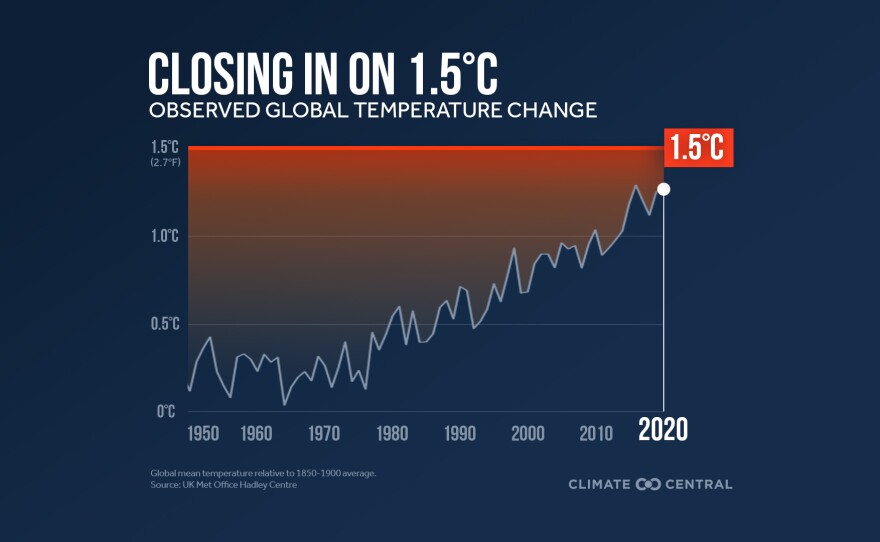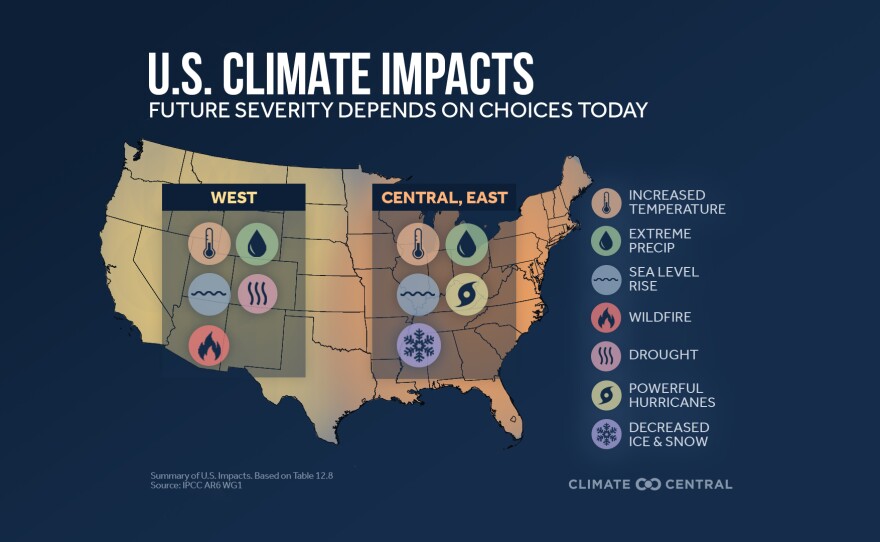A California researcher says climate change is already being felt and a new United Nations report says things could get much worse.
The U.N. report says the Earth is getting so hot that temperatures in about a decade will probably blow past a level of warming that world leaders have sought to prevent. The United Nations calls a “code red for humanity.”
The report says humans have warmed the planet by more than one degree Celsius and that will likely climb to 1.5 degrees by 2035. That is the global temperature threshold the Paris Climate accords were designed to avoid.

San Diego is already experiencing impacts linked to a warmer climate.
“There will be more extreme events and they will happen more often,” said Paul Edwards, a Stanford University professor who was one of the report’s co-authors. He made his comments on KPBS’ Midday Edition program.
“Those events, especially in a place like San Diego are going to be the ones you’re already familiar with drought, fire and flood,” Edwards said.
RELATED: New Scripps Institution Of Oceanography Research Vessel Runs On Hydrogen
The warming climate is directly linked to the carbon humans put into the atmosphere and the report ends any scientific debate about the source of the warming.
He said the study found there is a specific amount of carbon that can be released in order to stave off even tougher climate change impacts.
Edwards said 40 billion tons is the limit. That sounds like a lot, but it requires serious reductions in the amount of carbon released into the air.
Edwards thinks it is still possible to avoid the worst climate change scenarios if carbon emissions don’t continue to increase and the planet gets to a carbon neutral economy relatively quickly.
But he says some changes already underway won’t stop like the melting of the arctic ice and the rising sea levels.
The carbon already in the atmosphere will guarantee that will continue to happen.
And changes underway could change San Diego’s weather.
“The tropics are essentially moving northward,” Edwards said. “That is, tropical weather is now moving north into our areas. And beginning to affect what we see. That is part of why we have the rain bombs that occur here once in a while.”
Report co-author Linda Mearns says she sees nowhere that will be safe from climate change. But scientists also eased back a bit on the likelihood of the absolute worst climate catastrophes.
RELATED: Study Finds 1.4 Million California Homes In High Fire Risk Areas
The impacts of climate change are being felt in every U.S. state, territory, community and sector,” said a statement from the National Oceanic and Atmosphere administration in a statement about the U.N. report. “People are in harm’s way, infrastructure is increasingly outdated and in many places not designed for the new environmental realities, and extreme weather events continue to occur one after another.”

The report by the Intergovernmental Panel on Climate Change makes more precise forecasts for the 21st century than it did last time it was issued in 2013.
“The IPCC is sounding the alarm louder than ever. This report highlights the costs of inaction, details the devastating impacts of climate change around the world, and underscores that we are running out of time to tackle this crisis” said Marc Yaggi, executive director of Waterkeeper Alliance
The report was based on more than 14,000 studies and it is the first from the United Nations since 2013.








